Links to external sources may no longer work as intended. The content may not represent the latest thinking in this area or the Society’s current position on the topic.
Sexual selection: patterns in the history of life
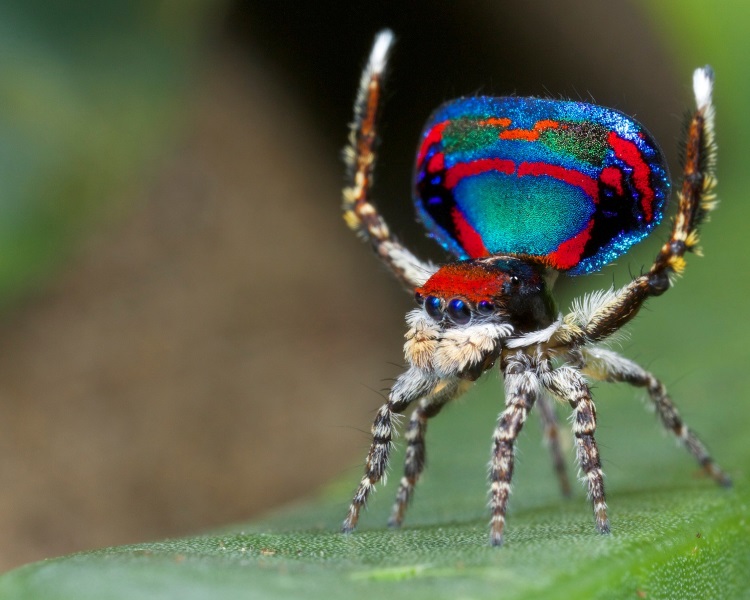
Theo Murphy international scientific meeting organised by Dr Rob Knell, Dr Dave Hone and Professor Doug Emlen
Sexual selection is potentially an important driver of macroevolutionary processes like speciation and extinction, but this has rarely been tested using the fossil record. This meeting will bring biologists and palaeontologists together to discuss sexual selection’s role in macroevolution, how to detect it in extinct animals and how to measure its influence on the history of life across geological time.
The speaker abstracts and biographies are available below. Recorded audio of the presentation will be available on this page after the meeting has taken place.
Enquiries: Contact the Scientific Programmes team.
Organisers
Schedule
Chair

Professor Mike Ritchie, University of St Andrews, UK

Professor Mike Ritchie, University of St Andrews, UK
Mike Ritchie is a Professor of Evolutionary Biology at the University of St Andrews. He studies genetics, behaviour and speciation in a range of systems. Much of his work involves quantitative genetic studies of sexual communication in insects, and how this diverges between species. More recently, he has worked on genomic divergence and identifying key genetic changes during evolutionary adaptation and divergence. This involves analyses of species complexes in Drosophila, crickets and fish, and phenotypic and genomic changes during experimental evolution in laboratory studies. Recently he finished a spell as Editor in Chief of the Journal of Evolutionary Biology, published by the European Society of Evolutionary Biology, and has been a panel member and Chair of research Committees for NERC, UK, and the Academy of Finland.
| 09:05 - 09:30 |
Males exist. Does it matter?
The evolution of sex, and its subsequent high prevalence in nature, is one of the great mysteries of life. The main reason, the so-called "twofold cost of sex", has something to do with male production: the cost does not exist in the same form in isogamous organisms that lack males and females. Such organisms, however, can still experience e.g. costs of mate-finding. The differences in costs are relevant because sex does not always coincide with there being two sexes in a population: ancient sex was neither obligatory nor did it feature a male-female dimorphism. This talk will discuss how this impacts the evolution of sex, and how the rules of sex change once there are males (a specialized morph that finds it more difficult to switch to asexual reproduction than what is possible for females). 
Professor Hanna Kokko, University of Zurich, Switzerland

Professor Hanna Kokko, University of Zurich, SwitzerlandHanna Kokko completed her PhD in 1997 at Helsinki University. She is now a Professor of Evolutionary Ecology at the University of Zurich, where she landed in 2014 after an Australian Laureate Fellowship. She has a longstanding interest in the mathematical logic that underpins biology, having published a textbook ‘Modelling for field biologists and other interesting people’, and displays particular curiosity towards the evolution of reproductive strategies. She is an invited member of two academies of science (in Finland and in Australia) and the recipient of the 2010 Per Brinck Oikos award, a prize awarded annually for a world-leading ecologist |
|
|---|---|---|
| 09:30 - 09:45 | Discussion | |
| 09:45 - 10:15 |
Speciation by sexual selection - the role of ecological effects on sexual communication
The idea that sexual selection can promote speciation dates back to Darwin. However, relationships between speciation rates and proxies for sexual selection (e.g. mating system, sexual dimorphism) differ substantially between taxa, indicating that the contribution of sexual selection to speciation depends on the biology of the organism as well as its environment. One major explanatory variable concerns the interaction of sexual selection with other forms of selection. Specifically, direct effects of ecological adaptation on sexual communication are thought to be particularly powerful in generating and maintaining reproductive isolation – but how common are such direct effects? In this talk, Dr Maan will highlight the difference between direct vs indirect effects of ecological adaptation on sexual selection processes, and the importance of this distinction for speciation. Dr Maan will illustrate this point using her group’s ongoing work on sensory drive in cichlid fish, where visual adaptation to alternative light environments coincides with divergent mate preferences. 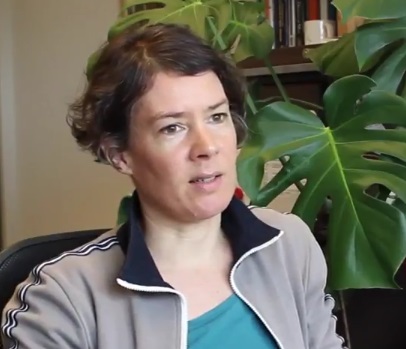
Dr Martine Maan, University of Groningen, The Netherlands

Dr Martine Maan, University of Groningen, The NetherlandsMartine Maan studies the biology of species formation, specifically asking how adaptations to different ecological conditions contribute to the development of reproductive barriers. She is particularly interested in the role of individual behaviour in reducing gene flow between diverging populations, such as habitat choice and mate choice. Her main study organisms are African cichlid fish. Martine received her PhD degree from the University of Leiden (2006) and did postdoctoral work in the US (University of Texas at Austin) and in Switzerland (University of Bern and Swiss Federal Institute of Aquatic Science and Technology; Eawag). Currently she is Rosalind Franklin Fellow and Assistant Professor at the University of Groningen. |
|
| 10:15 - 10:30 | Discussion | |
| 11:00 - 11:30 |
Sex biased selection and diversification
For the vast majority of Metazoans and many plants, evolution occurs via selection on genes expressed in two distinct subpopulations: males and females. Yet despite much interest in the evolution of sexual dimorphism, we know little about whether and why independent evolution of the sexes has affected the dynamics of diversification, impeding our understanding of the origins and maintenance of a substantial portion of biodiversity. In this paper we attempt reconcile the uncertain role that evolutionary divergence between the sexes may play in the origins of diversity, through elaboration of a previous conceptual model. We posit that independent evolution of the sexes may play a facilitating role in diversification, because niches favoured by natural selection are often sex specific. At the same time, the cross-sex genetic correlations, rmf, which may facilitate tracking a shared peak, acts as a constraint when favoured niches are sex specific. Moreover, we suggest that the existence of sex-specific niches may open a greater array of adaptive phenotype space for a diversifying lineage to explore. This novel view of independent evolution of the sexes raises open empirical questions such as; has relaxation of constraints on male and female evolution played a central role in facilitating diversification? To what degree does the presence of two sexes, and the prevalence and extent of phenotypic differences between them, change the dynamics of deep time diversification compared to the rest of the tree of life, which does not display such pervasive and striking within-species diversity? 
Professor Locke Rowe, University of Toronto, Canada

Professor Locke Rowe, University of Toronto, CanadaLocke Rowe is a Distinguished Professor of Evolutionary Biology at the University of Toronto. His research incorporates both theoretical and empirical approaches to investigating the ecology and evolutionary biology of life-history traits and sexual dimorphisms. His interests currently centre on sex-specific selection and the processes of sexual selection and conflict. He is an author of the Princeton Monograph, Sexual Conflict. He is the vice president of the American Society Of Naturalist, a Fellow of The American Association for the Advancement of Science, and a Senior Fellow of Massey College. |
|
| 11:30 - 11:45 | Discussion | |
| 11:45 - 12:15 |
Does sexual selection increase extinction risk? A test using fossil ostracodes
Sexual selection favors traits that confer advantages in the competition for mates. In many cases, such traits are costly to produce and maintain, as the costs help to enforce the honesty of these signals and cues. Some evolutionary models predict that sexual selection also produces costs at the population level, which could limit the ability of populations to adapt to changing conditions and thus increase the risk of extinction. Other models, however, suggest that sexual selection should enhance the removal of deleterious mutations and increase rates of adaptation, thus protecting populations against extinction. Previous attempts to test the conflicting predictions produced by these models have been limited to extant species and thus have relied on indirect proxies for species extinction such as population decline or conservation status. Dr Hunt exploits the uniquely informative fossil record of cytheroid ostracodes, (small, bivalved crustaceans with sexually dimorphic carapaces), to provide the first test of how sexual selection relates to actual species extinction. He shows that species with more pronounced sexual dimorphism, indicating the highest levels of male investment in reproduction, had estimated extinction rates ten times higher than lowest-investment species. These results indicate that sexual selection can be a substantial risk factor for extinction. 
Dr Gene Hunt, National Museum of Natural History, Smithsonian Institution, USA

Dr Gene Hunt, National Museum of Natural History, Smithsonian Institution, USADr Gene Hunt is a paleontologist at the National Museum of Natural History, Smithsonian Institution. He tries to understand what the fossil record tells us about the evolution of life, with a particular emphasis on how microevolutionary processes are expressed in the fossil record. His empirical work most often focuses on ostracodes (tiny crustaceans), using their rich fossil record to explore issues related to trait evolution, extinction and diversity. Gene received his BSc in Biology from Duke University and PhD in Evolutionary Biology from the University of Chicago. He held a post-doctoral position at the University of California, San Diego before starting at the Smithsonian in 2005. |
|
| 12:15 - 12:30 | Discussion |
Chair

Dr Darren Naish, University of Southampton, UK

Dr Darren Naish, University of Southampton, UK
Darren Naish is a vertebrate palaeontologist and author, based at the University of Southampton, who works on the evolution, anatomy, behaviour and biology of dinosaurs, pterosaurs and Mesozoic marine reptiles. He is broadly interested in all tetrapods but his areas of special interest include sexual selection as applied to fossil animals, Lower Cretaceous predatory dinosaurs from southern England, the behaviour and ecology of the giant azhdarchid pterosaurs, and the evolution of the shark-shaped parvipelvian ichthyosaurs. He blogs at Tetrapod Zoology, currently hosted by Scientific American, and his most recent books include Evolution In Minutes and Dinosaurs: How They Lived and Evolved (co-authored with Paul Barrett). He is currently compiling a textbook on the whole of the vertebrate fossil record.
| 13:30 - 14:00 |
Sexual selection, allometry and the cost of honest signalling
Why do many animals possess exaggerated sexual ornaments, why are some ornaments more exaggerated than others, and how can one identify sexually-selected traits in fossils of extinct animals? I will introduce the mathematics underlying two influential ideas from evolutionary biology: handicaps and indexes. Handicaps are exaggerated signals that are kept honest by quality-dependent costs paid by signallers, such that high-quality signallers benefit from producing exaggerated signals. Indexes are cost-free (and often subtle) signals, which are instead kept honest by the physical impossibility of dishonesty. Recent theoretical work has concluded that rather than being distinct concepts, handicaps and indexes are opposite ends of the same continuum. This theory makes predictions for the allometric slopes that are predicted to evolve for sexual signals, making it relevant to empirical studies of extinct or extant taxa that use allometric relationships to infer the functional relevance of traits. 
Dr Luke Holman, University of Melbourne, Australia

Dr Luke Holman, University of Melbourne, AustraliaLuke Holman is a Senior lecturer at the University of Melbourne. He is an evolutionary biologist mostly working on sexual selection/conflict, and the origins of social insects and their queen pheromones. His work uses experiments with insects, quantitative genetics, theoretical models, and bioinformatics. He obtained his PhD from the University of Sheffield, UK, and was formerly a Marie Curie fellow at the University of Copenhagen, and a DECRA fellow at Australian National University. |
|
|---|---|---|
| 14:00 - 14:15 | Discussion | |
| 14:15 - 14:45 |
Problems and potential solutions associated with identifying sexually selected structures in the fossil record
The fossil record offers opportunities to assess long term or repeated evolutionary phenomena that are otherwise impossible for living taxa. However, this is not without the considerable issues of the incompleteness of the fossils record and the problems associated with extracting data from it to tackle macroevolutionary questions. In addition to the often small sample sizes available (for single species or across lineages), most specimens will be of uncertain sex and perhaps uncertain age. Samples may be highly biased or exclusively composed of a single sex without our knowledge. Large samples where they do exist may cover a very broad range of populations that varied and time and space. The morphological species concept can make it difficult to even identify putative members of the same species, comparisons to extant taxa may be difficult, and critical traits such as crests or horns may be absent in large numbers of animals. However, awareness of these issues allows for creation and testing of hypotheses that account for the limited data, or at least interpreted in the light of such difficulties. There are intriguing and unexplored datasets that can be collected and analysed and this will require the expertise of both palaeontologists and neontologists. 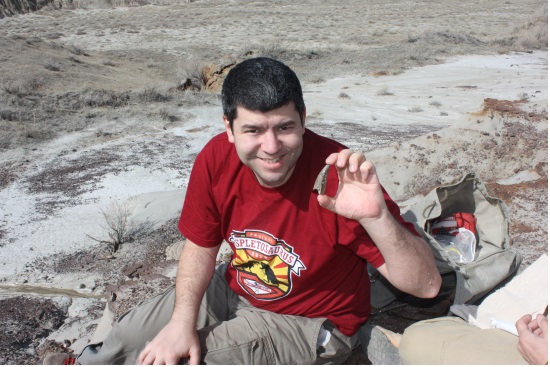
Dr Dave Hone, Queen Mary University of London, UK

Dr Dave Hone, Queen Mary University of London, UKDr Dave Hone is a Senior Lecturer in Zoology at Queen Mary University of London. He obtained a Zoology degree at the University of Bristol, a Masters from Imperial College, London, a PhD from Bristol and has worked in Munich, Beijing, and Dublin. He has worked on various fossil reptile groups including pterosaurs, rhynchosaurs and birds but specialises in the non-avian dinosaurs and especially the carnivorous theropods. He has worked extensively on body size evolution, predator-prey interactions (in particular scavening), social behaviour and socio-sexual dominance in the dinosaurs. |
|
| 14:45 - 15:00 | Discussion | |
| 15:30 - 16:00 |
Definitions and diagnoses in the fossil record: sexual selection vs species recognition and other processes
Charles Darwin may have invented the concept of sexual selection even before he conceived of natural selection. His original purpose was to explain the striking dimorphisms between males and females of a species, which could not be explained by natural selection and therefore posed a potential weakness to that theory. Darwin saw that these structures, usually possessed by the male, were used to attract mates and (or) to repel rivals for mates. There is no question of the centrality of sexual dimorphism (and not simply sexual differences or size differences or allometric differences) to Darwin’s sexual selection: in The Descent of Man he surveys all the animal phyla (over 300 examples) for sexually dimorphic features, and when he finds none in a group he consistently declares it of no interest to his theory. Without sexually dimorphic structures it is impossible to identify sexual selection in extinct animals. Taxonomic analogies of “bizarre structures” are weak but may be plausible if specific features are keyed to diagnostic functions. Species recognition, a common but understudied syndrome of living animals, is a better explanation for non-dimorphic elaborate structures, even if there are slight differences in expression between putative males and females in extinct taxa, because these are often the result of simple size differences between the sexes that are not related to sexual selection. “Mutual sexual selection” is an invalid concept. Darwin recognized humans as the only species in which each sex has selected (different) features in the other; this explains his book’s title.

Professor Kevin Padian, University of California, Berkeley, USA

Professor Kevin Padian, University of California, Berkeley, USAKevin Padian has been a professor of evolutionary biology and a curator in paleontology at Berkeley for 38 years. He is interested in how large-scale changes get started in evolution, and in the history of thought about biology and evolution. Much of his focus is on the age of dinosaurs, how dinosaurs evolved into birds, and how major adaptations such as flight evolve. He has authored, co-authored, or edited over 150 scientific articles, 200 popular articles and reviews, and seven books. For 16 years he was President of the National Center for Science Education. In 2005 he was an expert witness in the Dover, Pennsylvania “Intelligent Design” trial. He is a Fellow of the American Association for the Advancement of Science and of the California Academy of Sciences; he was the recipient of the Carl Sagan Award for the Popularisation of Science and was named Western Evolutionary Biologist of the Year in 2009. |
|
| 16:00 - 16:15 | Discussion | |
| 16:15 - 16:45 |
The evolution of extreme structures: inferring function from pattern
The ‘positive allometry hypothesis’ predicts that ornaments and weapons of sexual selection scale steeply when variation in trait size is compared with variation in overall body size. Intuitive and striking, this idea has been explored in hundreds of animal species and sparked controversy in paleobiology over the function of exaggerated structures in dinosaurs and other extinct lineages. Recently, however, the validity of this hypothesis has been challenged. Mr O’Brien will address this controversy in two ways. First, he suggest the positive allometry hypothesis be applied only to morphological traits that function as visual signals of body size. Second, because steep scaling slopes make traits better signals than other body parts, he proposes that tests of the positive allometry hypothesis compare the steepness of the scaling relationships of focal, putative signal traits, to those of other body parts within the same organism. He will provide data for a suite of extreme structures and show that steep scaling relationships are common when structures function as signals, but not for comparably extreme structures that function in other contexts. He will discuss these results in the context of animal signalling and sexual selection, and conclude that patterns of static scaling offer powerful insight into the evolution and function of disproportionately large, or extreme, animal structures. Finally, using data from a ceratopsid dinosaur and a pterosaur, he will show how our revised test can be applied to fossil assemblages, making this an exciting and powerful method for gleaning insight into the function of structures in extinct taxa. 
Mr Devin O'Brien, University of Montana, USA

Mr Devin O'Brien, University of Montana, USADevin O’Brien is an evolutionary biologist and behavioural ecologist from Missoula, Montana USA. Devin’s interests lie in the evolution of extreme morphology, where he explores how the costs of sexually selected weapons, and their intrinsic reproductive benefits, shape animal behaviour and mating systems. Devin received his BSc in 2013 from the University of Connecticut, where he worked with Elizabeth Jockusch on the evolution and development of insect appendages. In April of 2018, he completed his PhD under Doug Emlen at the University of Montana, where he focused on behavioural ecology and functional morphology in the weapon bearing frog legged leaf beetle. |
|
| 16:45 - 17:00 | Discussion |
Chair
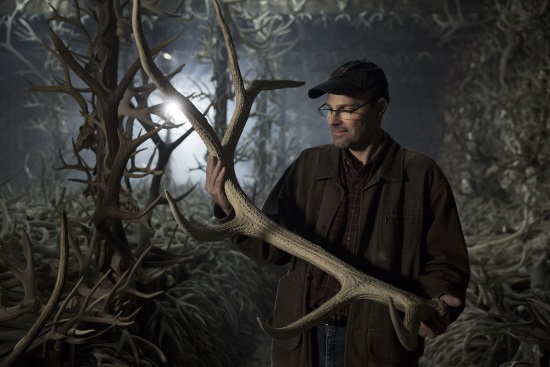
Professor Doug Emlen, University of Montana, USA

Professor Doug Emlen, University of Montana, USA
Douglas J Emlen studied at Cornell University (BA 1989), Princeton University (PhD 1994), and Duke University (Postdoctoral Research Fellow 1994-1997), before joining the faculty at the University of Montana where he is now the director of Organismal Biology, Ecology, and Evolution, one of UM’s three Programs of National Distinction. He is the first scholar from any Montana institution to be elected to the American Academy of Arts and Sciences (2016) and was the first Montanan to receive the U.S. Presidential Early Career Award in Science and Engineering (2002). Emlen has earned more than $2.5 million in multiple research awards from the National Science Foundation, including their five-year CAREER award, as well as a Young Investigator Prize and the E. O. Wilson Naturalist Award from the American Society of Naturalists. In 2014 he was awarded UM’s Distinguished Teaching Award, and in 2015 the Carnegie/CASE Professor of the Year Award for the State of Montana. His book Animal Weapons: The Evolution of Battle (Henry Holt, 2014) won the Phi Beta Kappa science book award in 2015, and his textbook Evolution: Making Sense of Life (co-authored with award-winning journalist Carl Zimmer, Macmillan Publishing, 2nd edition 2015), is presently adopted by more than 250 universities and colleges. His research has been featured in The New York Times, National Public Radio’s Fresh Air and Science Friday, and YouTube’s SciShow. This spring he starred in a BBC documentary about his work, Nature’s Wildest Weapons.
| 09:00 - 09:30 |
Sexually dimorphic structures in mammals: can we use them to draw inference about past environments?
The pattern of sexual dimorphism in ungulate (hoofed) mammals in relation to habitat preference was established by Peter Jarman in the early 1970s. He proposed five categories of ecomorphology within African antelopes that related to body size, size dimorphism, and dimorphism in horns. These ecomorphologies were correlated with differences in reproductive behaviour, which in turn were correlated with habitats ranging from closed forest to open grasslands. Thus the distribution of such ecomorphologies within fossil communities may provide information about the habitat independent of other palaeoenvironmental proxies. While sexual dimorphism in body size is difficult to determine in fossils, absolute body size and patterns of the possession of horns (or other types of cranial appendages) can be observed. The pattern of acquisition of cranial appendages and changes in lineages over time can provide information about habitat changes both within and between geographic areas. Cranial appendages first appeared in artiodactyls in the mid Cenozoic at a time when more open habitats started to spread in the higher latitudes: but patterns of acquisition and distribution of dimorphic ecomorphologies differ between ungulates in North America and the Old World, implying earlier and more significant aridity on the North American continent (an implication now confirmed by other proxies). Patterns of horn dimorphism in African bovids may serve to illuminate habitat change over time on that continent. 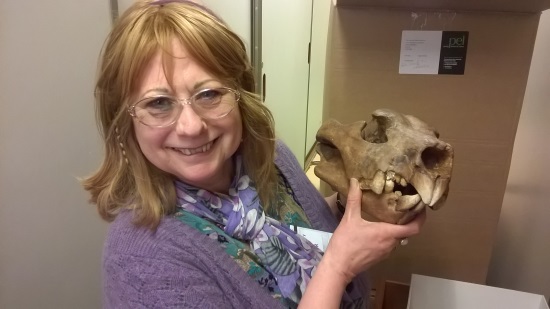
Professor Christine Janis, University of Bristol, UK

Professor Christine Janis, University of Bristol, UKChristine has a BSc Natural Sciences (Zoology) from the University of Cambridge,a PhD in Organismal Biology (Vertebrate Paleontology) from Harvard University. and a Fellowship from Newnham College (University of Cambridge) Fellowship. She is a Professor of Ecology and Evolutionary Biology at Brown University, Providence, USA from 1983 – 2016 (full professor since 1999). Currently she is a Professor Emerita at Brown University, and Honorary Professor in Earth Sciences (Palaeobiology) at the University of Bristol. UK. Her interests have primarily been in the evolution and palaeobiology of mammals, especially ungulates (hoofed mammals), although she has also published papers on the palaeobiology of early tetrapods and dinosaurs, and recently has come to have a penchant for marsupials (especially kangaroos and large carnivores). Her research is based in functional morphology, comparing the osteology of extinct mammals with extant ones in order to determine their probable behaviour, and she is also interested in how climatic and environmental change over the past 20 million years has affected the course of mammalian evolution. |
|
|---|---|---|
| 09:30 - 09:45 | Discussion | |
| 09:45 - 10:15 |
Sexual selection on colour signals: mechanisms and diversity
Sexual dichromatism, the difference between the sexes in coloration, is one of the most widely used indices of sexual selection in macroevolutionary studies. These studies have revealed evolutionary drivers of the strength of sexual selection, patterns of evolutionary losses and gains of sexual dichromatism, and associations between sexual dichromatism and rates of diversification (including speciation and/or extinction). But how robust is sexual dichromatism as a measure of sexual selection? What are the pitfalls and strengths of this measure? Measures of sexual dichromatism vary widely, limiting our ability to directly compare results between studies, and most do not account for receiver vision. This is important, both because animal colour vision varies substantially, and because the relationship between coloration and signal salience is likely non-linear. Colour is also produced by a variety of mechanisms, for example, pigmentary and structural. This has important implications for costs and constraints on colour variation, and therefore it is utility as a measure of sexual selection. Mechanisms of colour production also have implications for our ability to measure or reconstruct coloration of preserved and fossil specimens. Sexual dichromatism is a useful measure of the strength of sexual selection to identify patterns in the history of life, but coloration is multifaceted and must be understood in its biological context. 
Associate Professor Devi Stuart-Fox, University of Melbourne, Australia

Associate Professor Devi Stuart-Fox, University of Melbourne, AustraliaDevi Stuart-Fox is an Associate Professor in the School of Biosciences at the University of Melbourne, Australia. Her research focuses on the evolution of animal coloration, particularly on macro-evolutionary patterns of diversity in animal coloration, and on the evolution of colour polymorphism and colour change. Stuart-Fox obtained her PhD at the University of Queensland, Australia in 2003 before spending four years at the University of the Witwatersrand in South Africa pursuing postdoctoral research on colour change in chameleons. She was an Australian Research Council Fellow from 2010-2015 and a Fellow at the Wissenschaftskolleg zu Berlin (Berlin Institute for Advanced Studies) in 2016. |
|
| 10:15 - 10:30 | Discussion | |
| 11:00 - 11:30 |
Variation rates as an indication of sociosexual display in horned dinosaurs, and other ornithischians
Phenotypic variation is the basic material upon which selection acts, and as such quantifying this variation is an important aspect of evolutionary biology. Specifically, research on a diverse array of living animals has documented higher rates of morphological variation in sociosexual display structures, than those under natural selection. Many dinosaur species, particularly ornithischians, exhibit ‘exaggerated’ skeletal structures that lack obvious mechanical functions and have been hypothesized to have function is sexual and social display. These are often manifested as outgrowths/hypertrophy of the skull roof, including the solid and hollow crests of Hadrosauridae, the horns and frills of Ceratopsia, and the thickened domes of Pachycephalosauria. For dinosaur palaeobiology, however, intraspecific variation is often regarded as merely an obstacle to robust taxonomy. Here morphological variation was quantified (using coefficient of variation) for the well-sampled species of horned dinosaur Centrosaurus apertus, as well as complementary dataset of the horned dinosaurs Anchiceratops, Chasmosaurus, Protoceratops, and the duck-billed dinosaurs Lambeosaurus, and Corythosaurus. Levels of variation for the putative ornamentation structures (e.g. frills, horns, crests) are significantly higher (~2-3 times) than those for the remainder of the skull. These results are consistent with, and often statistically indistinguishable from, the known sexual displays of a comprehensive dataset of extant amniotes analogues (including mammals, birds, and squamates). When combined with previous research suggesting these same structures in ornithischians are ontogenetically delayed, positively allometric, rapidly evolving, and highly species-specific, these data provide further support to the hypothesis that sociosexual selection was the evolutionary driver of these ‘exaggerated’ structures. 
Dr Caleb Brown, Royal Tyrrell Museum, Canada

Dr Caleb Brown, Royal Tyrrell Museum, CanadaGrowing up in Alberta, Canada, Caleb was exposed to the province’s rich fossil history early, which sparked his interest in palaeontology and natural history. He received a B.Sc. and MSc from the University of Calgary in zoology and palaeontology, and then travelled east, to pursue my PhD at the University of Toronto and Royal Ontario Museum where he investigated the evolution of horned dinosaurs. Following is PhD, Caleb returned to his home province, to take up a post-doctoral fellowship at the Royal Tyrrell Museum of Palaeontology in Drumheller, Alberta, where his research focuses on Late Cretaceous ornithischian dinosaurs. Caleb’s research interests include investigating evolutionary rates, growth, and variation of dinosaur display structures (horns, frills and crests), and adding to the growing understanding of dinosaur diversity through ongoing fieldwork and excavations. |
|
| 11:30 - 11:45 | Discussion | |
| 11:45 - 12:15 |
Sexual selection, adaptation and extinction: lessons from experimental evolution
Failure of populations to adapt to sudden environmental changes may lead to extinction. Sexual selection can have multiple, and often opposing, influences on extinction probability. Whether the net outcome of these influences is increased, or decreased, extinction risk is an open empirical question. Professor Radwan will demonstrate how experimental evolution can be used to address this question, focusing on his own work utilising mite species with males differing in expression of a costly sexually selected trait. 
Professor Jacek Radwan, Adam Mickiewicz University in Poznan, Poland

Professor Jacek Radwan, Adam Mickiewicz University in Poznan, PolandJacek Radwan received his PhD at Jagiellonian University, Krakow, Poland, where, after post-docs at the University of Sheffied, UK, and Max Planck Institute in Seewiesen, Germany, he become lecturer and then professor. Five years ago he moved to Poznan, to take up a position of Professor in Evolutionary Biology at Adam Mickiewicz University. His research have focused sexual selection, especially its evolutionary-genetic background, including the role of mutations and genes interacting with parasites, such as MHC genes. He has studied consequences of sexual selection for adaptation and extinction of populations using experimental evolution approach. Evolution of MHC genes and their role in biological conservation has recently become another important area of his research. |
|
| 12:15 - 12:30 | Discussion |
Chair
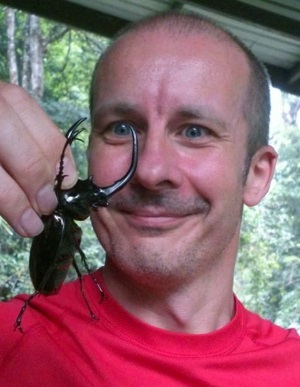
Dr Rob Knell, Queen Mary University of London, UK

Dr Rob Knell, Queen Mary University of London, UK
Rob Knell is reader in Evolutionary Ecology at Queen Mary, University of London. His research interests include population ecology, evolutionary adaptation, the evolution of animal weaponry and the role of alternative mating tactics, and the large-scale influence of sexual selection on evolutionary patterns. He has published research on the role of sexual selection in adaptation and species persistence in the face of changing environments, and on the role of sexual selection in prehistoric animals. Current research includes empirical work on the diversity of weaponry in dinosaur clades and the relationship between the strength of sexual selection and species persistence in altered environments as well as theoretical work on subjects such as the relationship between selective harvest by humans and species adaptation in changing environments.
| 13:30 - 14:00 |
Quantifying the evolution of theropod cranial ornaments
Ornamental signalling structures function to convey messages about an individual organism’s defensive capability, physiology and genetic identity. Across evolutionary time these ornamental structures can be subject to directional selection that increases their size and/or complexity. These same forces may also act on other aspects of an organism’s physiology or morphology, such that ornamental and non-ornamental traits evolve in tandem. Work from the Gates lab has shown that non-avian theropod species with bony cranial ornaments evolved large body size faster and in most cases topped a greater maximum size than those non-avian species that lacked such bony structures. Terry follows this work by exploring the link between body size and osteological cranial ornaments in galliform birds with two important results. First, bony cranial ornaments in galliforms also characterize species of the largest body size. Ornstein-Uhlenbeck modelling suggests that species of the largest body size tend to have the most ornamented crania when osteological and soft tissue ornaments are taken together. The group’s data also indicate that habitat (coded as a discrete character) of modern Galliformes plays a role in the presence or absence of cranial ornamentation, providing evolutionary biologists with a possible tool for interpreting the ecology of extinct non-avian theropods. The use of quantitative analyses is essential to understanding the effect of ornaments on organismal evolution. Practitioners of these methods should interpret their results in light of null models based on sexual selection or species recognition theory, which can vary dramatically depending on the conditions of selection. 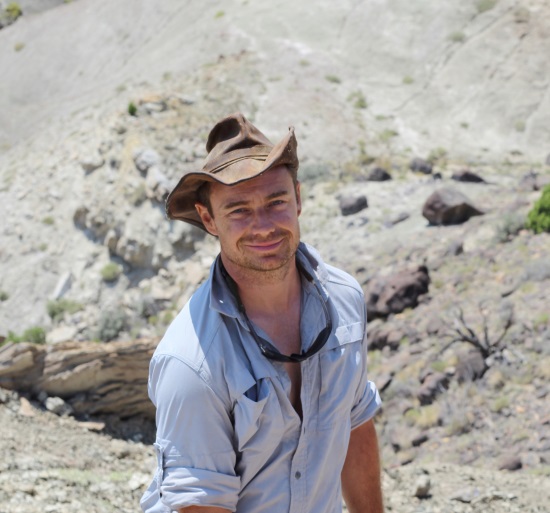
Dr Terry Gates, North Carolina Museum of Natural Sciences, USA

Dr Terry Gates, North Carolina Museum of Natural Sciences, USATerry Gates is a vertebrate paleontologist at North Carolina State University, USA. His work largely focuses on understanding broad-scale paleobiological patterns in duck-billed dinosaurs including describing new species and testing how biogeography and cranial ornamentation affect diversification patterns. Although Terry has performed research in Mexico, Mongolia, Botswana, and South Africa, the majority of his research focuses in North America where a nearly complete Late Cretaceous record allows quantitative testing of evolutionary rates along with the effect of mountain building and sea level on ancient ecosystems. Most recently, his research incorporates phylogenetic comparative methods to decipher patterns of ornamentation and life-style across birds. When not working on dinosaurs, he dabbles in the diversity and ecology of ancient sharks as well as taphonomic modeling. |
|
|---|---|---|
| 14:00 - 14:15 | Discussion | |
| 14:15 - 14:45 |
Weapons versus signals in sexual systems and their potential impact on macroevolution
Sexual selection researchers often start their papers in the same way – by highlighting the diversity of conspicuous secondary sexual traits. But despite decades of research interest, Dr McCullough would argue that much of this diversity actually remains poorly understood. In this talk, Dr McCullough will discuss two issues hampering our understanding of sexual selection and how it drives the diversity of sexually selected traits. First, the focus of sexual selection research is skewed towards female mate choice. The unfortunate consequence of this bias is that the terms ‘sexual selection’ and ‘mate choice’ are now often used interchangeably, and the term ‘ornament’ is often used to refer generally to all types of sexually selected traits. Dr McCullough thinks that this imprecise terminology is problematic, and she will explain why the distinction between male-male competition and female choice is important. Second, it’s often assumed that sexually selected traits are always signals. Although many sexually selected traits certainly are signals (either to attract females or to threaten rivals), the weapons that are used directly during male-male fights may sometimes only function as tools. Interspecific differences in the relative importance of fighting versus signalling may have important implications for how these structures scale with body size, and when and why some weapons become exaggerated. In order to fully understand the diversity of sexually selected traits, we need to recognize that ornaments are different from weapons, and that weapons are different from signals. 
Dr Erin McCullough, University of Western Australia, Australia

Dr Erin McCullough, University of Western Australia, AustraliaErin received her PhD in organismal biology and ecology from the University of Montana in 2014, and then started a position as a National Science Foundation international postdoctoral fellow at the University of Western Australia. She is broadly interested in the evolution of sexually selected traits. Using horned beetles as a model system, She has studied the elaboration and diversification of sexually selected weapons, and she is currently investigating the interaction between pre- and post-mating episodes of selection. Her research takes a functional approach to the study of sexual selection, integrating the fields of behavioural ecology, functional morphology, physiology, ecology, and evolution. |
|
| 14:45 - 15:00 | Discussion | |
| 15:30 - 16:00 |
Adaptation, extinction and environmental change in the fossil record
The ability of species to adapt to differing rates of environmental change remains largely unknown. The fossil record can elucidate these dynamics by directly examining the rate at which species evolve their tolerances, or abiotic niches, in response to climatic perturbations over long time scales. Sexual selection is hypothesised to have an effect on rates of niche evolution under some evolutionary models. Long-term evolutionary dynamics derived from the fossil record can inform on any potential relationship between sexual selection and rates of niche evolution. For example, does sexual selection result in lower rates of niche adaptation in comparison to lineages subject solely to natural selection, and does this in turn increase their risk of extinction? Do rates of niche adaption differ in males and females that have been sexually selected? Professor Saupe will demonstrate how these questions can be tackled using the last three million years of niche evolution in marine molluscs from the Western Atlantic. She will additionally discuss the value of the fossil record for quantifying rates of adaption in morphological traits putatively linked to sexual selection, and for testing the influence of sexual selection on rates of speciation and extinction over geological time scales. 
Professor Erin Saupe, University of Oxford, UK

Professor Erin Saupe, University of Oxford, UKErin Saupe is a Professor of Palaeobiology at the University of Oxford, Department of Earth Sciences. Her Research investigates the interactions between life and environments over geological time scales. She is specifically interested in elucidating the controls on community and species’ responses to environmental change across various spatial and temporal scales. Before joining the Department of Earth Sciences at the University of Oxford, she was a research fellow at the Yale Institute for Biospheric Studies at Yale University. She received a BA in Natural Sciences from the College of St. Benedict (USA) in 2007, and a PhD in palaeobiology from the University of Kansas (USA) in 2014. |
|
| 16:00 - 16:15 | Discussion | |
| 16:15 - 17:00 | Panel discussion: overview (future directions) |
